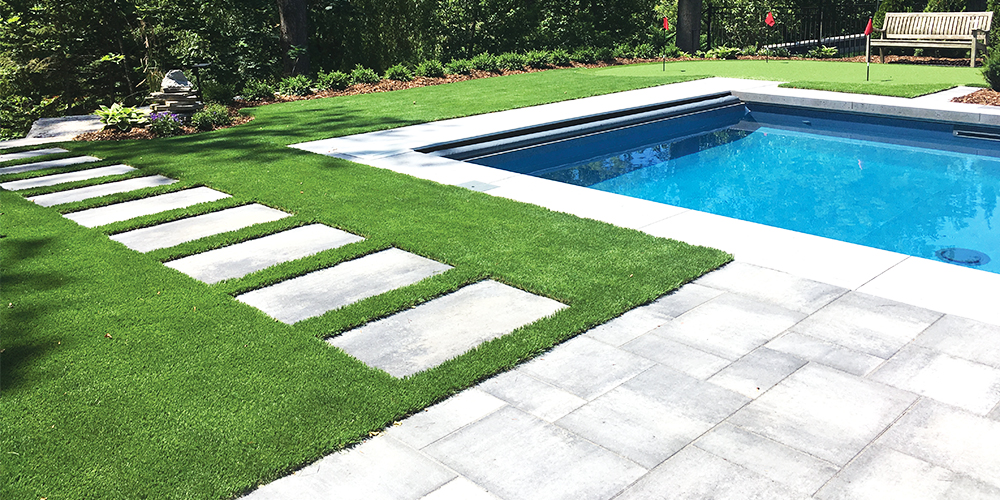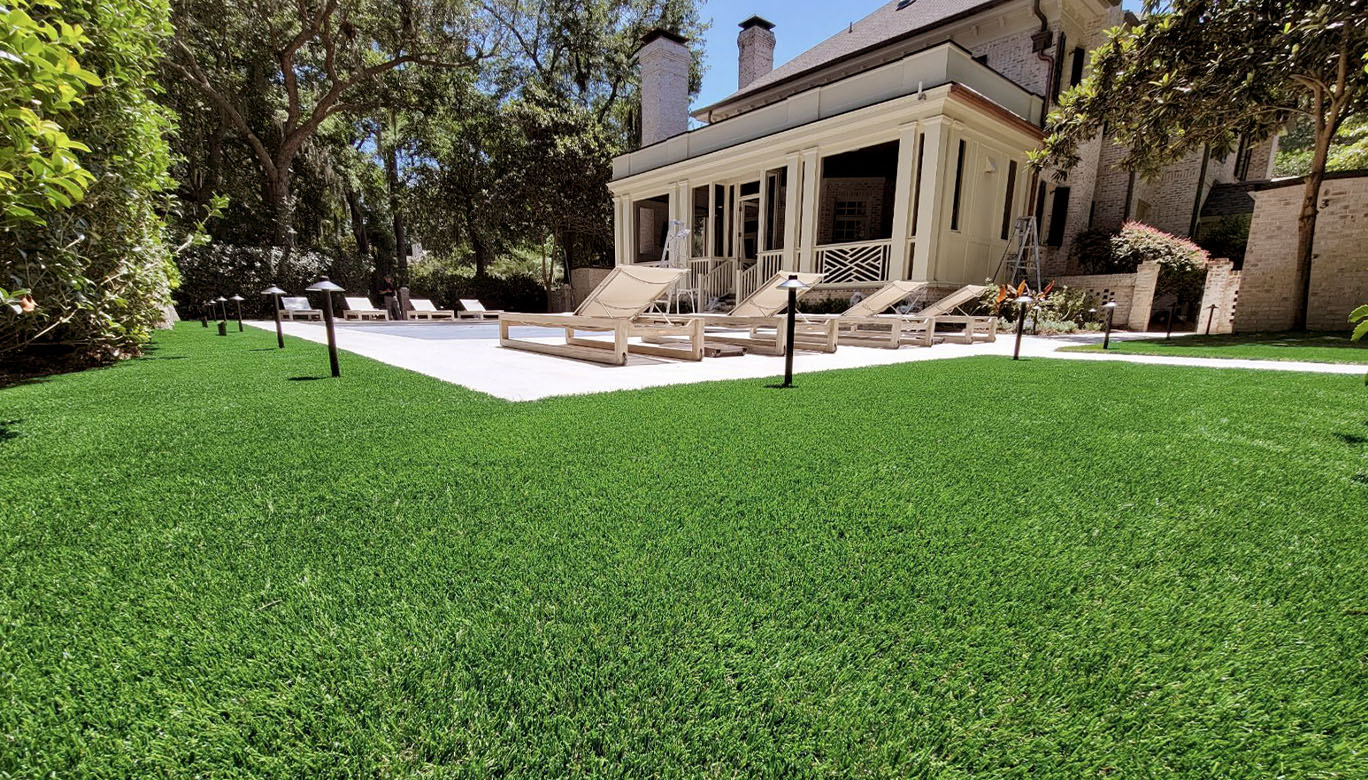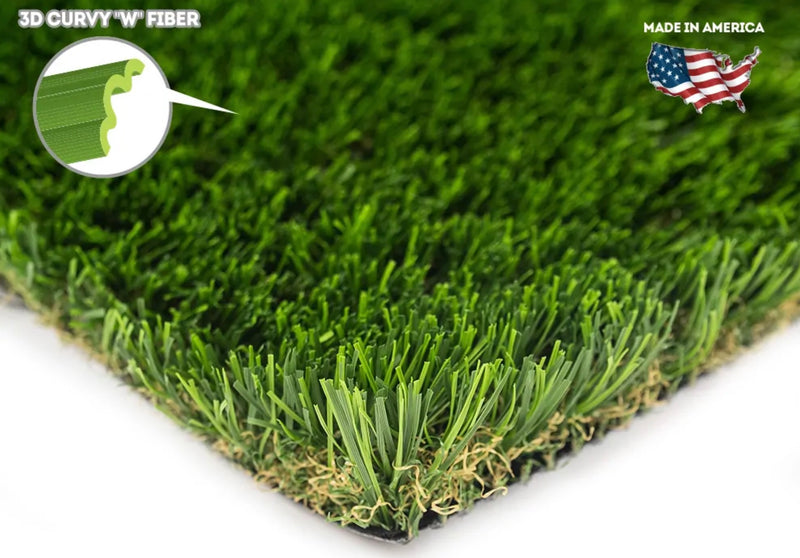Tailored Turf Installation Phoenix AZ for Residences, Companies, and Recreational Spaces
Tailored Turf Installation Phoenix AZ for Residences, Companies, and Recreational Spaces
Blog Article
Delve Into the Environmental Advantages of Opting for Synthetic Grass Solutions
The adoption of synthetic lawn services offers a compelling possibility to deal with pushing ecological challenges. By significantly minimizing water use and reducing the application of hazardous chemicals, these choices not only promote lasting landscaping however additionally protect neighborhood communities.
Water Preservation Conveniences
One of one of the most substantial benefits of artificial lawn is its capacity to save water. Traditional yard lawns require substantial watering, particularly in areas prone to drought or water limitations. On the other hand, artificial turf does not need watering, significantly decreasing the overall demand for water sources. This feature is particularly useful in deserts where water deficiency is a pushing problem.
By eliminating the requirement for routine watering, artificial grass adds to sustainable landscape practices and helps reduce the ecological impact of too much water consumption. In addition, the conservation of water encompasses the decrease of drainage, which can lead to dirt erosion and waterway contamination.
Furthermore, the installation of fabricated lawn allows towns and house owners to designate water resources much more effectively, concentrating on important usages such as drinking water and agriculture. The shift towards synthetic grass not only promotes accountable water use yet additionally straightens with wider ecological objectives focused on maintaining all-natural resources.
As communities progressively prioritize sustainability, the water preservation advantages of fabricated grass provide a compelling case for its adoption in business and property landscaping projects.
Minimized Chemical Usage
The change to synthetic grass substantially reduces the reliance on chemical treatments frequently utilized in all-natural lawn maintenance. Standard grass management usually involves the application of chemicals, herbicides, and fertilizers to advertise growth and control parasites. These chemicals can posture dangers to human wellness, local wildlife, and the environment, adding to soil and water contamination.
In contrast, synthetic grass removes the need for these hazardous materials. Once installed, it calls for minimal maintenance, primarily including normal cleaning and seldom infill replenishment. This reduction in chemical use not just profits the instant environment but also adds to more comprehensive environmental security. By minimizing the launch of artificial compounds right into the environment, fabricated grass advertises healthier dirt and water systems.
Additionally, the lack of chemical runoff linked with synthetic grass setups aids safeguard regional waterways from contamination, sustaining water life and maintaining biodiversity. Arizona artificial turf. As neighborhoods significantly focus on lasting methods, choosing fabricated lawn offers a sensible option that straightens with ecological preservation objectives. Through this shift, residential property proprietors can take pleasure in lavish environment-friendly rooms without endangering environmental health, paving the means for a much more sustainable future
Reduced Carbon Impact

Moreover, the setup of synthetic turf can result in significant water preservation. Natural lawns require considerable amounts of water for irrigation, which not only includes to the carbon footprint linked with water extraction and treatment yet likewise pressures local water sources. In contrast, synthetic grass needs very little upkeep, requiring no watering, thus significantly reducing water usage and its linked energy prices.
Additionally, the longevity of man-made grass contributes to its decreased carbon effect. With a lifespan of as much as 15 years or even more, the need for constant replacements is diminished, leading to less waste and reduced power intake in manufacturing and disposing of traditional grass choices. On the whole, synthetic grass provides a lasting option for eco conscious landscaping.
Environment Conservation
Environment conservation is a crucial factor to consider in the argument over landscape design selections, specifically when comparing artificial lawn to natural turf. Natural grass yards usually need extensive maintenance, consisting of using chemicals, plant foods, and herbicides, which can detrimentally affect regional ecosystems. These chemicals can leach right into the dirt and waterways, hurting indigenous flora and fauna and interfering with neighborhood habitats.
Synthetic lawn eliminates the demand for harmful chemicals, consequently securing nearby wild animals and keeping the stability of bordering communities. The setup of man-made lawn can lead to the conversion of former turf locations into more biodiverse landscapes, such as pollinator yards or native plant areas, which can sustain regional wild animals.
Ultimately, the transition to synthetic grass not only conserves water and minimizes upkeep efforts but also cultivates a much more unified partnership between human tasks and the native environment, promoting environment preservation at the same time.
Long-Term Sustainability
Long-term sustainability is a crucial consider reviewing the benefits of synthetic grass over typical grass yards. One of the most significant benefits of fabricated turf is its resilience; it can last Continued as much as 15-20 years with minimal upkeep, whereas natural turf calls for constant reseeding and substitute. This longevity minimizes the need for consistent sources, such as water, fertilizers, and pesticides, which are essential for maintaining a healthy and balanced grass lawn.
Additionally, artificial turf adds to a reduction in carbon discharges connected with grass treatment equipment. Traditional grass commonly require gas-powered mowers, trimmers, and blowers, every one of which add to air contamination. Turf installation phoenix az. On the other hand, synthetic lawn eliminates the demand for such tools, promoting a cleaner environment
Furthermore, the production of fabricated grass significantly uses recycled products, improving its sustainability profile. As producers embrace environment-friendly methods, the environmental impact of fabricated lawn proceeds to reduce.

Final Thought
The fostering of fabricated turf options offers significant environmental benefits, consisting of substantial water preservation, minimized reliance on harmful chemicals, and a reduced carbon impact. In addition, fabricated lawn aids in maintaining all-natural environments by reducing land disruption and advertising long-term sustainability via using long lasting materials. Collectively, these aspects underscore the capacity of man-made turf to add positively to environmental wellness and offer a feasible alternative to conventional landscape design methods in a significantly resource-conscious globe.
In contrast, fabricated turf does not require watering, considerably reducing the general demand for water resources. By decreasing the release of synthetic substances right into the ecological community, synthetic grass advertises healthier soil and water systems.
Furthermore, the installation of synthetic grass can result in significant water conservation. In contrast, man-made lawn requires marginal upkeep, calling for no watering, thus significantly reducing water use and its connected power costs.

Report this page